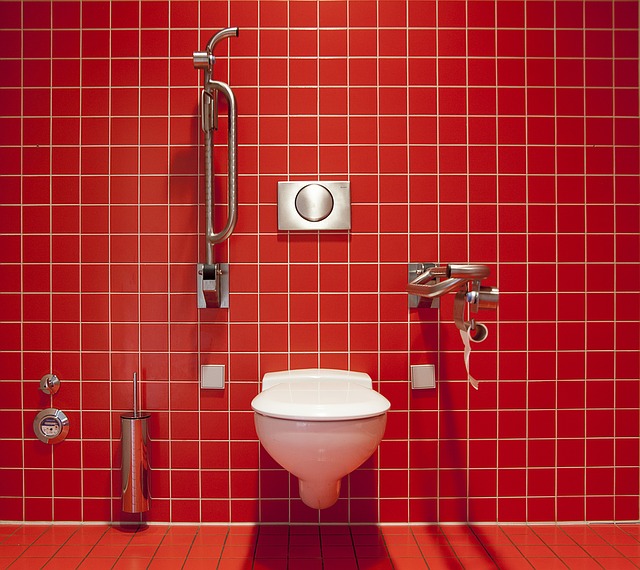Lavatory
In modern usage, the term ‘lavatory’ (UK pronunciation: ‘lavah-tree’) describes a room or cubicle containing sanitaryware or other receptacles for the passing of human waste. The sanitaryware will usually be connected to a public drainage system.
When used to describe a room, a lavatory may also contain other sanitaryware, such as a bath, shower, urinal or bidet. Other ancillary facilities may typically include wash-hand basins, hot air dryers, towels and mirrors.
The term lavatory is sometimes used synonymously:
- Toilet
- WC (although this more correctly refers to the water closet sanitaryware itself)
- Bathroom (if it contains a bath)
- Loo
- Washroom
- Ladies / gents
- Sanitary convenience
- Powder room
Historically, a lavatory was a cistern or trough where the inmates of monastic establishments could wash their hands and faces, as well as their surplices and vestments.
See Lavatorium.
In southern Germany, lavatories took on grander functions that resembled those of baptistries. They would be either square or octagonal chambers to the side of a cloister and would have a series of water troughs for washing arranged around a fountain located centrally in the room.
The term lavatory was also given to a ‘piscina’ – a drain that was originally connected to Roman aqueducts but which later was applied to a stone basin near a church altar.
Legal requirements for sanitary conveniences, washing facilities and bathrooms are set out in Part G of the building regulations, with solutions to common situations described in Approved Document G (Sanitation, hot water safety and water efficiency).
NB The Scottish Building Standards, Part I. Technical Handbook – Domestic, Appendix A Defined Terms, defines a toilet: ‘…an enclosed part of a storey which contains a watercloset, a waterless closet or a urinal, which are properly installed for use.’
[edit] Related articles on Designing Buildings
- Approved Document G.
- Bidet.
- Cistern.
- Earth closet.
- ECA Water Scheme.
- Garderobe.
- Gas fired toilet.
- Inclusive design.
- Lavatorium.
- Macerating toilet systems.
- Passive water efficiency measures.
- Sanitary accommodation.
- Sanitaryware.
- Shared toilet facilities.
- Shower.
- Sink.
- Solid surface wash troughs.
- Types of sanitary appliances.
- Urinal.
- Wall hung toilet.
- Water closet.
- Wet room.
Featured articles and news
The history of building regulations
A story of belated action in response to crisis.
Moisture, fire safety and emerging trends in living walls
How wet is your wall?
Current policy explained and newly published consultation by the UK and Welsh Governments.
British architecture 1919–39. Book review.
Conservation of listed prefabs in Moseley.
Energy industry calls for urgent reform.
Heritage staff wellbeing at work survey.
A five minute introduction.
50th Golden anniversary ECA Edmundson apprentice award
Showcasing the very best electrotechnical and engineering services for half a century.
Welsh government consults on HRBs and reg changes
Seeking feedback on a new regulatory regime and a broad range of issues.
CIOB Client Guide (2nd edition) March 2025
Free download covering statutory dutyholder roles under the Building Safety Act and much more.
AI and automation in 3D modelling and spatial design
Can almost half of design development tasks be automated?
Minister quizzed, as responsibility transfers to MHCLG and BSR publishes new building control guidance.
UK environmental regulations reform 2025
Amid wider new approaches to ensure regulators and regulation support growth.
The maintenance challenge of tenements.
BSRIA Statutory Compliance Inspection Checklist
BG80/2025 now significantly updated to include requirements related to important changes in legislation.
























Comments
Quite informative. It’s good to know more about the lavatory from reading this piece of content before we finally proceed with the construction. Thanks!